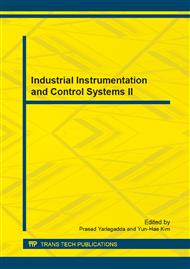p.2138
p.2142
p.2147
p.2152
p.2157
p.2164
p.2171
p.2175
p.2182
The Determination of the Uniqueness of Polymorphism in C++
Abstract:
The polymorphism is the one of the main features of the object oriented program. The compiler determines the uniqueness of polymorphism by dynamic binding. In a static source code, there will be one function calling point corresponding to several called functions. As the consequence, there will be many redundant function calling paths. It is the key to improve the efficiency of the path coverage test based function call graph with control logic determining the uniqueness of polymorphism. This paper analyzes the feature of the polymorphism in C++ and proposes an algorithm to determine the uniqueness of polymorphism statically in C++. The algorithm can find the unique called function from the several called functions without running the program. The result shows that the algorithm can obtain the unique called function correctly and eliminate the redundant paths. It improves the testing efficiency and reduces the testing cost.
Info:
Periodical:
Pages:
2157-2163
Citation:
Online since:
July 2013
Authors:
Keywords:
Price:
Сopyright:
© 2013 Trans Tech Publications Ltd. All Rights Reserved
Share:
Citation:


